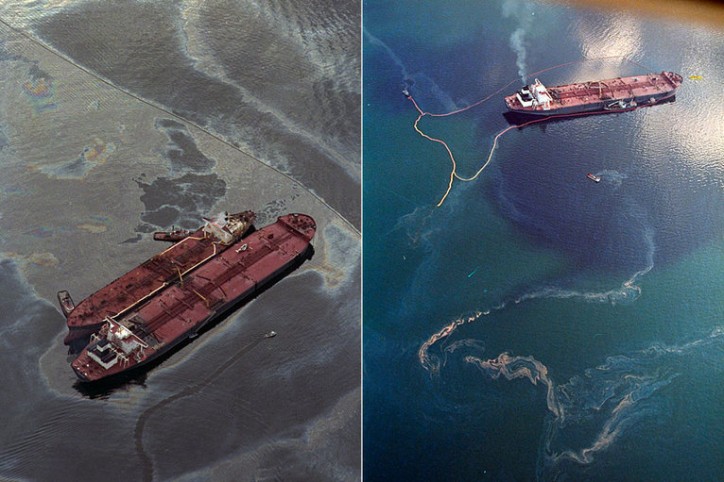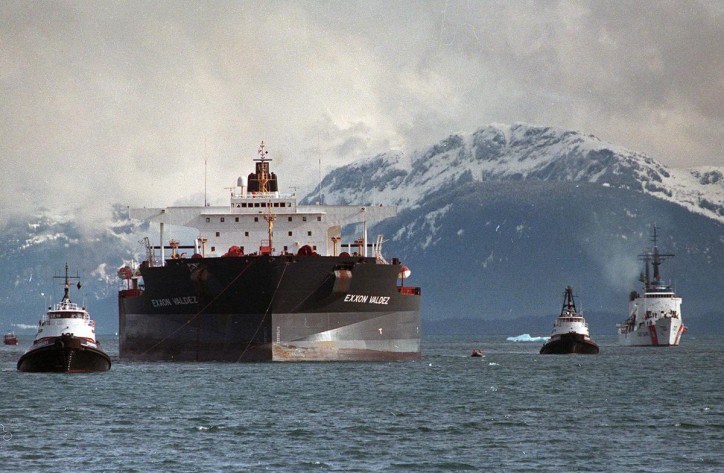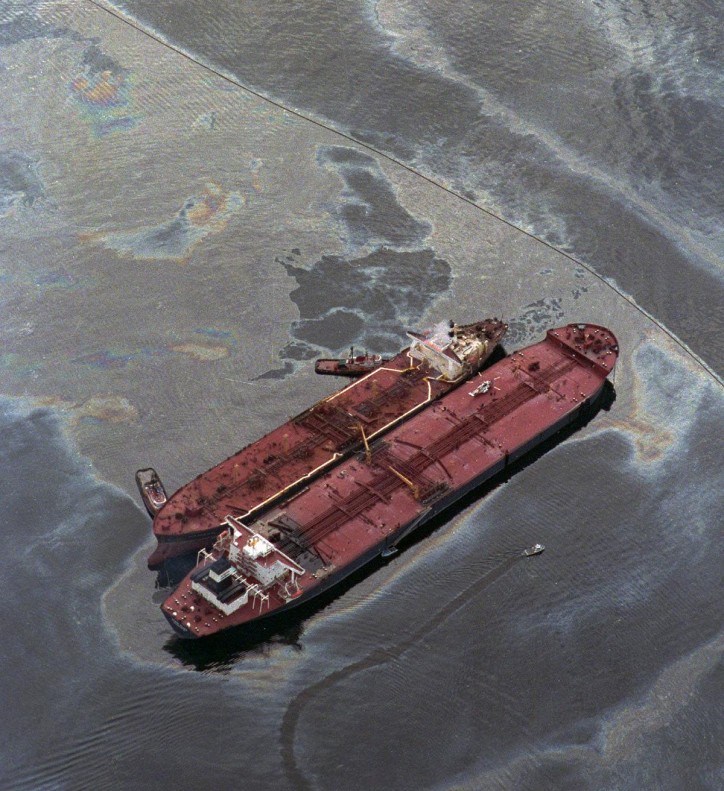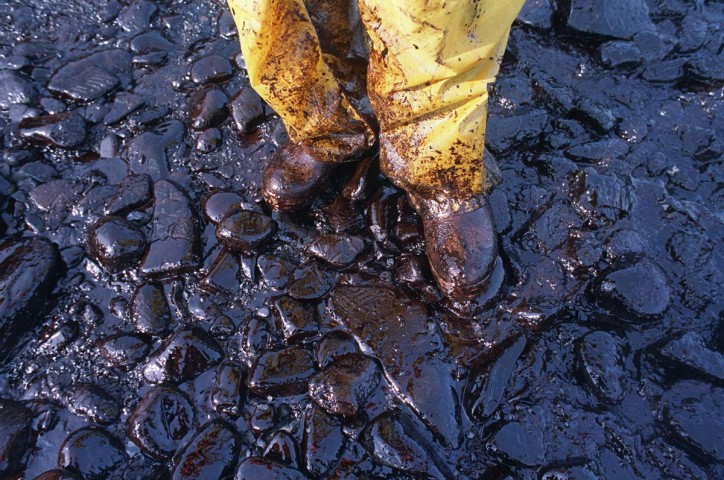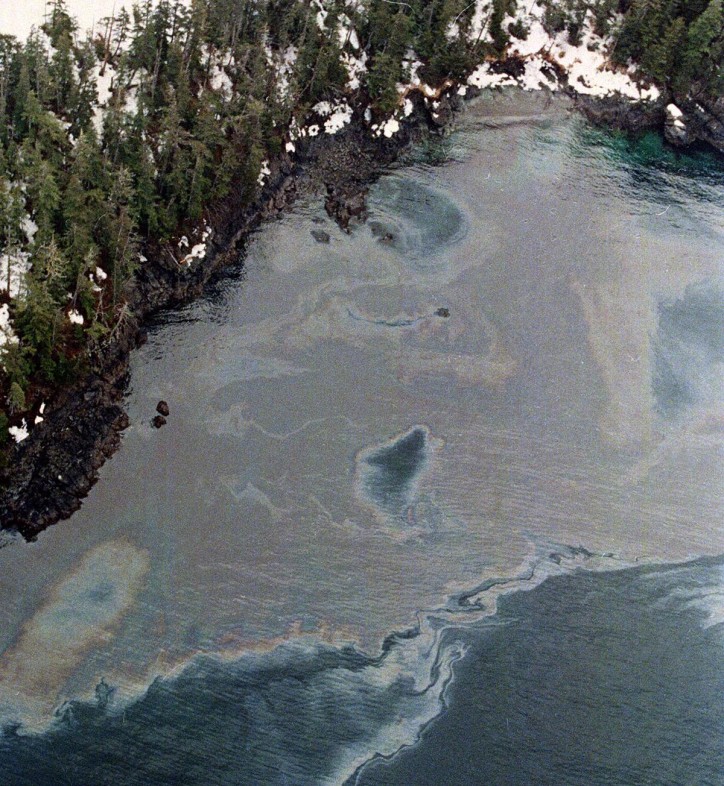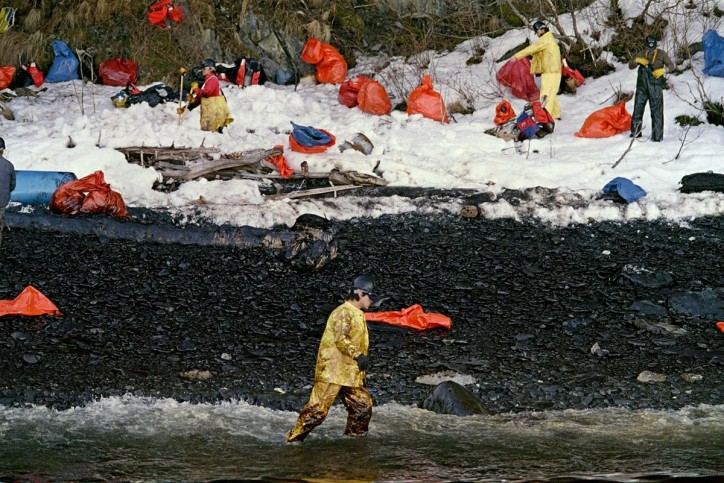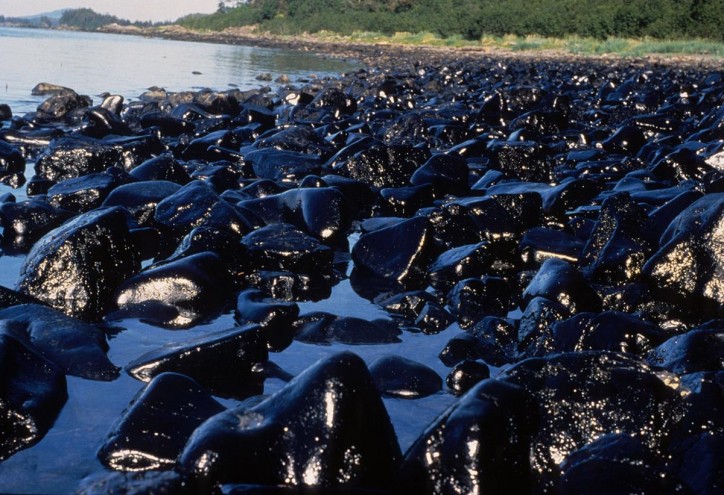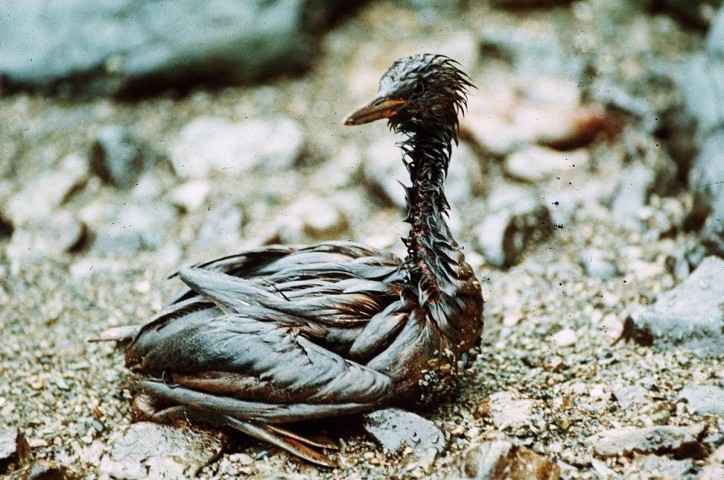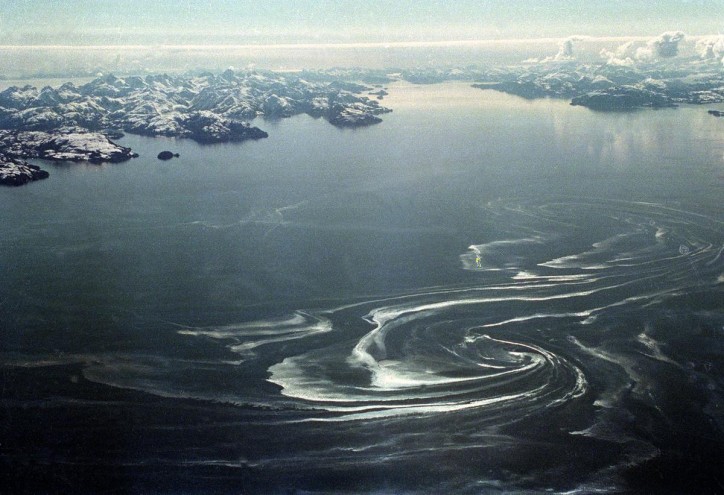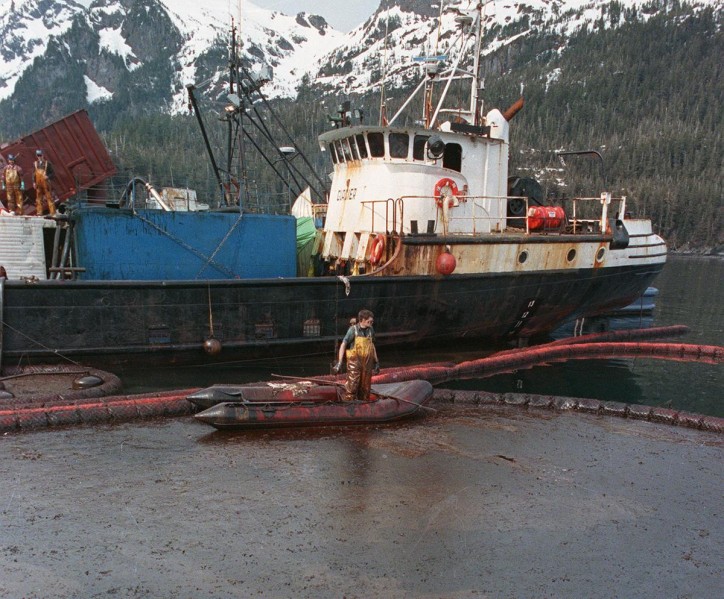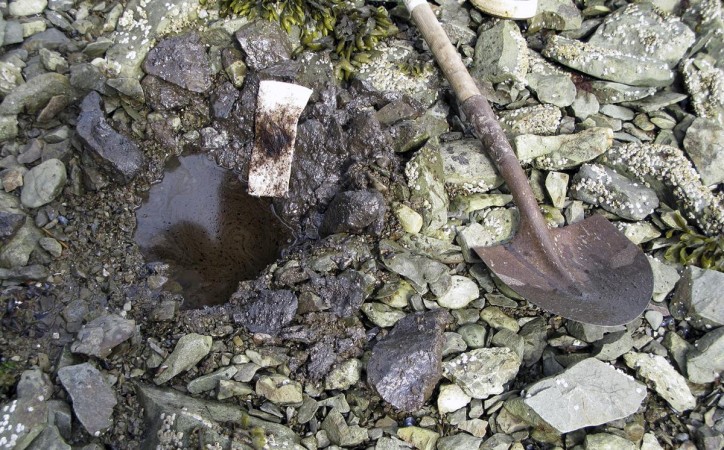On March 24, 1989, the oil tanker Exxon Valdez had just entered Alaska's Prince William Sound, after departing the Valdez Marine Terminal full of crude oil. At 12:04 am, the ship struck a reef, tearing open the hull and releasing 11 million gallons of oil into the environment.
Initial responses by Exxon and the Alyeska Pipeline Company were insufficient to contain much of the spill, and a storm blew in soon after, spreading the oil widely. Eventually, more than 1,000 miles of coastline were fouled, and hundreds of thousands of animals perished.
Exxon ended up paying billions in cleanup costs and fines, and remains tied up in court cases to this day. The captain, Joseph Hazelwood, was acquitted of being intoxicated while at the helm, but convicted on a misdemeanor charge of negligent discharge of oil, fined $50,000, and sentenced to 1,000 hours of community service. Though the oil has mostly disappeared from view, many Alaskan beaches remain polluted to this day, crude oil buried just inches below the surface.
The damaged oil tanker Exxon Valdez, towed out of Alaska's Prince William Sound by a tugboat and a U.S. Coast Guard Cutter, on June 23, 1989. On March 24, 1989, the tanker ran hard aground on Bligh Reef, spilling 11 million gallons of crude oil into the sound -- at the time, the largest oil spill disaster in U.S. history. Image: AP Photo/Al Grillo
The Exxon Baton Rouge (smaller ship on left) attempts to offload crude oil from the Exxon Valdez after the Valdez ran aground in Prince William sound near Valdez, Alaska, on March 26, 1989. Image: AP
hick crude oil washed up on the cobble beach of Evans Island sticks to the boots and pants of a local fisherman in Prince William Sound, on April 11, 1989 - Image: AP Photo/John Gaps III
High winds on Prince William Sound push crude oil up into an inlet on Squire Island on April 10, 1989 - Image: AP Photo/John Gaps III
A cleanup worker walks through the oily surf at Naked Island on Prince Williams Sound on April 2, 1989, as early beach cleanup efforts take place in the background, a week after the spill - Image: Chris Wilkins/AFP/Getty Images
Oily rocks glisten in the sun on Green lsland in Prince William Sound. This section of beach, earlier signed off as being environmentally stable by both Exxon and the Coast Guard, was re-oiled on July 4, 1989 - Image: Alaska Resources Library and Information Services
An oil skimming operation works in a heavy oil slick near Latouche Island on April 1, 1989 - Image: Chris Wilkins/AFP/Getty Images
A Red Necked Grebe, covered in oil, found on Knights Island, about 35 miles from the spill, on March 30, 1989. The bird was taken to the bird cleanup center in Valdez by photographers - Image: AP
An oil slick swirls over Prince William Sound, Alaska, on April 2, 1989, about 50 miles from where the tanker Exxon Valdez ran aground - Image: AP/Rob Stapleton
A clean-up worker rakes through crude oil, contained by floating booms off the waters of Prince William Sound on April 16, 1989. The oil, contained here in Snug Harbor off Knight Island, was later sucked off the water by a U.S. Coast Guard skimmer Image: AP /John Gaps III
Decades later, on May 5, 2010, oil is shown seeping into a hole dug on a beach on Eleanor Island, Alaska - Image: Reuters/Lindsay Claiborn
Source: TheAtlantic

